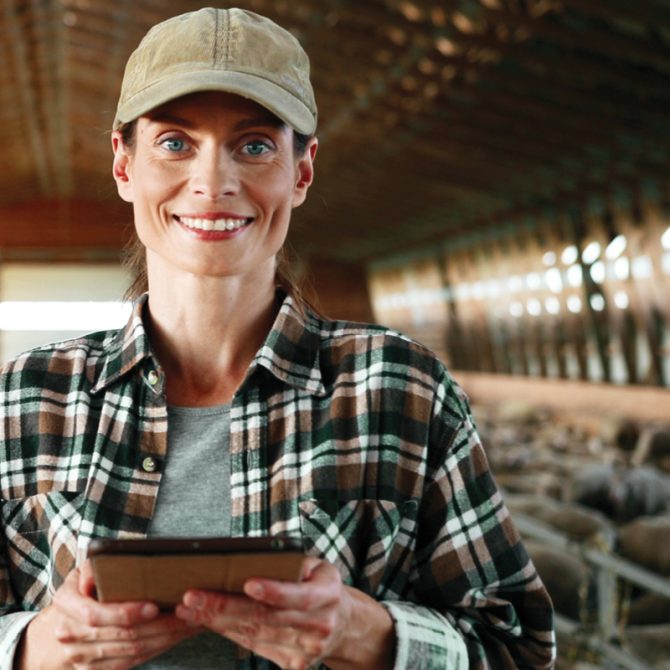Innovations in Agriculture
4 innovations revolutionizing farming today, and why reliable Internet is critical to modern agriculture

Zoom calls with prospective buyers. Internet of Things (IoT) solutions. Webinars to stay up to date on the latest research and techniques.
The modern farmer uses technology every day to stay in touch with the community around them and on top of the information that will help their business thrive. A quality high-speed Internet connection, then, is key to farming today. They’re so tied, in fact, that one report called fast, affordable Internet critical to more sustainable farming and more reliable and efficient food production.
Fast, reliable Internet connectivity can increase a farm’s efficiency, reduce downtime and help keep crops and herds healthy. It can also help farmers stay in touch with the newest information without having to travel hundreds of kilometres to attend conferences or meet with suppliers.
How else can high-speed Internet empower farms and agribusinesses today? Let’s look at four innovative ways modern farmers are putting their connections to work.
1. Precision Agriculture
In the corporate world, data drives strong decision making. And the same is just as true in modern agriculture. Precision agriculture uses real-time data from technologies like sensors and satellites, as well as soil samples and pest reporting, to help farmers come to the best decisions on things like planting, pesticide use and animal care. By allowing farmers to make smarter decisions, this flow of data lets them become more efficient, cutting down waste while improving yields. Since profit margins can often be narrow in farming, this also helps farmers make their business more profitable.

2. Robotics
While many of us might still see robots as a thing of science fiction, farmers are putting them to use every day. Agricultural robots are picking apples, harvesting vegetables and getting rid of weeds. Drones are used to take aerial photos to let farmers better assess the health of their crops. And in the dairy industry, robots are also used for milking and feeding, in order to maximize production and improve herd health.
3. Monitoring and Biosecurity
Today, modern farmers employ sophisticated technology to get a deeper dive into yield estimates and crop forecasting. Sensors in greenhouses can monitor plant health, moisture, humidity and temperature. Beef farmers can use them to understand how cows and calves are reacting to feed changes or extreme weather conditions. Monitoring also plays a critical role in biosecurity, tracking herd health.

4. Traceability
Today, more consumers are interested in where their food comes from, and the practices the farms that produce their meat and vegetables have put in place. Traceability allows farmers to trace the products they send to market, so that they have a better record of where those products end up — and can let consumers see exactly the journey their food took. It also lets farmers ensure compliance with quality standards throughout the supply chain and, in the case of food recalls, track the root of the problem so that they can make smarter decisions and waste less.
Modern Connections for Modern Agriculture
With so many innovations available — as well as a world of information, data and connections to take advantage of — it’s clear why modern farmers and agribusinesses rely on high-speed Internet. Yet many rural areas across Canada still struggle with finding a quality high-speed Internet connection.
Xplore Business is here to help.
We offer fast, reliable Internet to agriculture businesses of all sizes, across some of Canada’s most rural and remote locations – with a choice of connections across fibre, 5G and satellite networks. That makes us a smart choice for Canadian farmers today.
Find out more about Xplore Business’s connectivity options.

